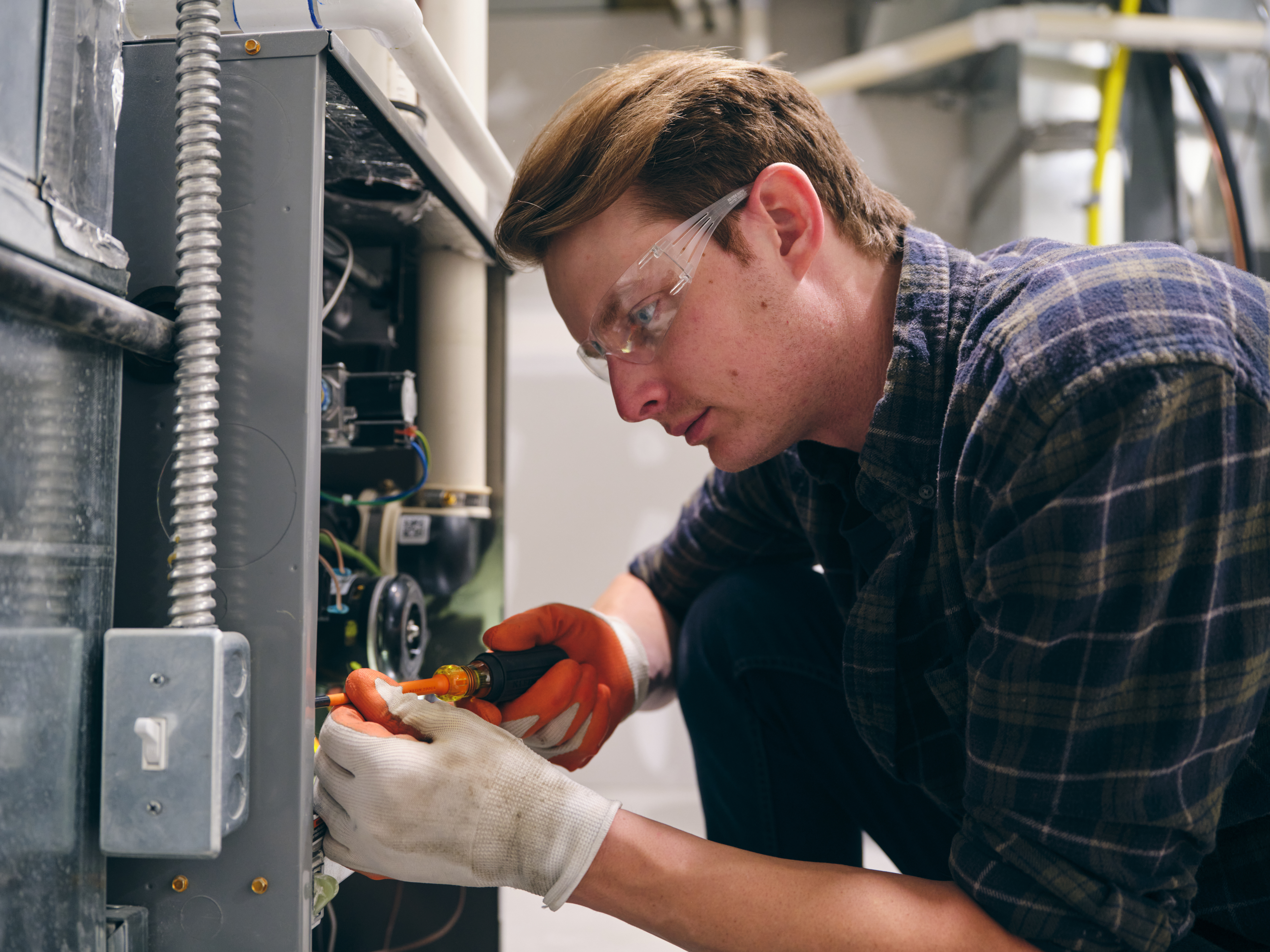If you are in the market for a heating system for your San Antonio home, it’s easy to feel overwhelmed by all the options available. Heat pumps, gas furnaces, and electric furnaces are the three primary choices available in the San Antonio area. Before choosing one of these systems, it is good to consider the pros and cons.
Heat Pumps
A heat pump is an HVAC device capable of both heating and cooling your home. During the cooler winter months, a heat pump extracts heat from the outdoor air and pumps that heat into your home. During the warm summer months, it extracts heat from your home, cooling it.
Heat pumps do not use fossil fuels. In fact, they do not create heat at all but instead transfer heat from one location to another. This makes heat pumps environmentally friendly and energy-efficient. They work best in milder climates, where temperatures usually do not dip below freezing. In colder regions, a heat pump can work in conjunction with a furnace to provide energy-efficient heating on colder days.
A heat pump’s key components are the outdoor and indoor units. The outdoor unit has a fan and a coil. Its coil functions as a condenser when the heat pump is in cooling mode or as an evaporator when the heat pump is being used to heat the home. The fan blows outside air over the coils, facilitating heat exchange.
Heat Pump Pros
Heat pumps offer enhanced comfort. They heat the interior of a building more gradually than furnaces, especially when the temperature outside is cold. While this might seem like a disadvantage, it is beneficial because it minimizes temperature fluctuations in the home once it reaches the desired temperature.
They also help lower heating costs. Heat pumps transfer heat instead of generating heat from burning a fuel source like gas or oil. This means that a heat pump can be 400% energy efficient under optimal conditions.
A final benefit of heat pumps is that they can work in reverse to cool your home during warm San Antonio summers. This means you can keep your home comfortable year-round without investing in a separate air conditioning unit.
Heat Pump Cons
The downside of a heat pump is that it doesn’t work well in extremely low temperatures. Thankfully, this is not a significant issue in San Antonio, where winter temperatures usually only drop to 40°F.
Heat pumps run longer than furnaces. This means that the compressor and fan work almost nonstop during cold weather. You can minimize the noise from a heat pump by installing the outdoor unit further away from windows and doors.
Finally, there’s the cost. A heat pump will cost more to install and purchase than a traditional furnace. However, you may be able to offset some of the expense through energy savings over the years.
Gas Furnaces
A natural gas furnace is an HVAC appliance that heats your home through combustion fueled by natural gas. The gas is ignited in the furnace, warming up the air inside. This heated air is then delivered throughout the home via ductwork.
The thermostat is a key component of a gas furnace, allowing you to set the temperature and communicate with your HVAC unit. It also controls when the HVAC unit activates and deactivates. The burners are metal tubes that carry the natural gas, heating the incoming air. Its heat exchanger consists of a series of metal tubes heated by the burners to warm the air in the furnace. The blower directs the incoming air through the ducts toward the heat exchanger and redistributes it through the ducts to be distributed throughout your home.
A furnace operates by first receiving a signal from the thermostat, indicating that the house is not at the desired temperature. Natural gas is ignited in the burner. As the gas is directed toward the burner, a pilot light, also known as electronic ignition, ignites the burner from inside the combustion chamber. This heats the natural gas, which the incoming air passes through, allowing the air to be heated before it is transported back through the ducts.
Clean air is separated from the combustion waste, and the exhaust is sent outside the house. Finally, the warm air leaves the ductwork and enters the home, while cold air is forced back toward the furnace through the ductwork.
Gas Furnace Pros
A gas furnace will heat your home much faster than a heat pump. This is especially beneficial when you arrive home on a cold winter night and want the home to feel warm quickly. They work well in both mild and cold temperatures.
Additionally, a gas furnace is cost-efficient compared to an electric heater. They are adaptable, and a newly installed gas furnace can connect to an existing HVAC system.
Gas furnaces are very popular, which is advantageous if you plan to sell or rent your home in the future. Most people understand how they work and are comfortable with their functions.
Gas Furnace Cons
Gas furnaces are cost-efficient in the long run but are expensive to install. They can also have a shorter service life. A well-maintained gas furnace may last between 15 and 20 years. However, a similarly well-maintained electric heater could last between 20 and 30 years.
Additionally, gas furnaces have high maintenance requirements. Since gas furnaces use a combustion process, they need to be inspected. Preventative upkeep needs to be done to avoid serious problems like carbon monoxide leakage.
Electric Furnaces
An electric furnace has an air handler equipped with heating coils. You can compare an electric furnace to a toaster. The heated coils in the furnace act much like those in your toaster, glowing red when heated.
When the thermostat senses the difference between the indoor temperature and the desired setting, it will call for heat from the central heating system. The heating coils will start to warm up, and the blower fan will push heat at a preset rate through the ductwork in your home. Once your home reaches the desired temperature, the thermostat will send another signal, indicating it’s time to shut down.
Electric Furnace Pros
In milder climates like San Antonio, an electric furnace can be very cost-effective. Some homes that use solar energy can run an electric system for little to no cost. Electric furnaces have a lower environmental impact than gas furnaces, and they can produce reliable heat even when the temperature is freezing outside. Unlike gas furnaces operating between 80% and 96% efficiency, electric furnaces run at 100%. There is no waste during the heating process.
Electric Furnaces Cons
Lower-quality electric furnaces will struggle if the temperature outside is very cold. Another downside is that the cost of electricity is often much higher than natural gas, meaning that it will cost more to heat your home.
You Have the Right to Be Comfortable
At Air Authority, A Riteway Service Company, we are proud to be a locally owned and operated HVAC company. We are dedicated to keeping you and your family safe and comfortable year-round. We employ NATE-certified technicians and are a Better Business Bureau-accredited business.
Our services include HVAC repair, replacement, and maintenance. We offer indoor air purification and filtration and duct cleaning and sealing. Additionally, we work on residential, commercial, and new construction projects. Contact Air Authority, A Riteway Service Company today to experience what it’s like to work with a company that always puts you first.





